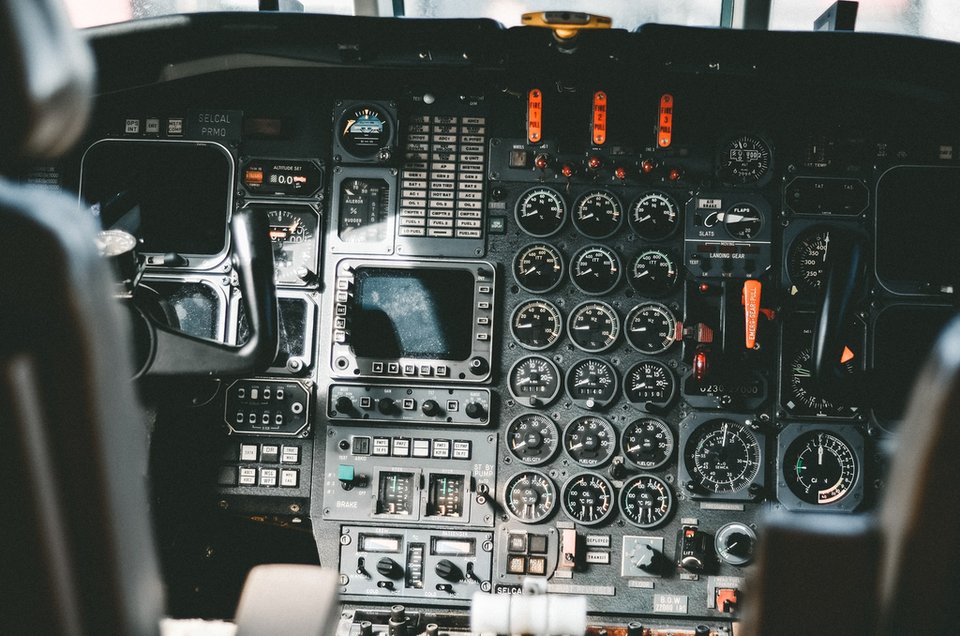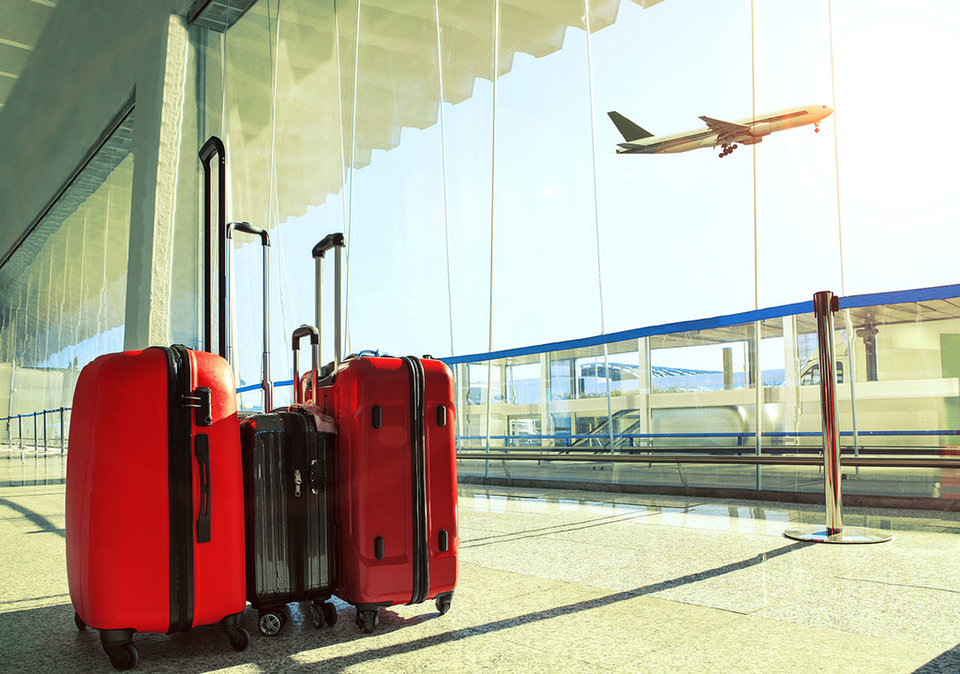TECHNOLOGY
Getting connected:
how will airports benefit from 5G?
How will the implementation of 5G networks change airports and the passenger experience, and will it help the industry to recover from the global Covid-19 pandemic? Frances Marcellin takes a look at five areas where 5G could benefit airports in the future.
Over the next five years the airport journey as we know it could be transformed through the implementation of 5G.
According to a study by Juniper Research there were already 5 million 5G subscribers worldwide in 2019. Connections are predicted to grow by 150% each year, reaching 1.5 billion globally by 2025.
The introduction of 5G is good news for airports. Experts say that while 4G manages 10,000 devices per square kilometre, 5G can deal with 1 million with greater speeds and increased data transfer. This means airports can operate better systems and offer passengers a slicker experience that is not possible today.
Image:
What are the benefits of 5G in airports?
ACI World’s director of security, facilitation and IT Nina Brooks sees two main benefits of 5G in airports: enhancing existing applications (such as passenger processing, baggage management and airport operations), and enabling new technologies (such as edge computing, internet of things, digital twin creation and artificial intelligence).
“The speed and flow of data, and the sheer potential to use historic, predictive and real-time data, offers solutions that seemed light years away, only a few years ago,” says Brooks. “These advances will enable much stronger collaboration between airports, airlines, ground handlers, air traffic managers, suppliers and retailers, and make their interactions seamless and faster.”
As the global aviation and tourism industry starts up again following the Covid-19 crisis, 5G’s arrival is well-timed and will facilitate applications – including contactless solutions – that will help airports and airlines manage Covid-era regulations.
“Leveraging 5G for speed and data density will enable better monitoring and analysis of assets in and around the airport,” says SITA vice president of communication and data exchange Gilles Bloch-Morhange.
“This will deliver greater efficiencies and aid faster decision-making, which is now more important than ever as the industry recovers from Covid-19.”
ACI World director of security, facilitation and IT Nina Brooks. Image: ACI World.

Fresh investment in the existing infrastructure at Detroit Airport could play an intrinsic role in the city’s ongoing recovery
Aircraft communications
Aircraft communications is one of the areas that will benefit the most from the implementation of 5G. Bloch-Morhange describes modern aircraft as “giant flying data centres” and says that the ability to exchange high volumes of data at speed will lead to more timely and impactful data insights.
“These insights can deliver predictive maintenance (for example, monitor braking parts and improving fuel usage) more efficient turnaround and on-time aircraft departures,” he says.
The use of 5G, with satellite and very high-frequency communications, will connect all the relevant technologies and systems on board the aircraft, explains Bloch-Morhange.
“The advantages of this is that real-time information pulled from these technologies and systems will support faster inflight decision-making, help optimise operations and enhance the passenger experience,” he says.
“Real-time information can be used for optimising aircraft status and maintenance needs, fleet operations and cargo and crew management, as well as the ability to assess things like landing conditions.”

Photo by Leonel Fernandez on Unsplash
Airport operations
In terms of airport operations, 5G will facilitate better communications and faster problem solving.
Dr Derek Peterson, CTO of Boingo, a company providing airports with Wi-Fi and distributed antenna system (DAS) networks in the US, says that 5G introduces revolutionary new architectures for internet of things (IoT) use cases that include enhanced security with 4K video surveillance, autonomous traffic control, biometrics services for boarding, predictive maintenance and utilities monitoring.
“These use cases are only the beginning,” he says. “Just as 4G sparked new innovations like rideshare services and Netflix for streaming, 5G will lead to new inventions and opportunities.”
SITA’s Bloch-Morhange explains that combining 5G and AI will make turnaround more efficient – one example is using it to anticipate the fuel level of a fuel truck. “So, when a flight arrives you know where the fuel truck is and its fuel load, which makes for a better more efficient service,” he says.
In the future, airports would be able to monitor and optimise every vehicle at the airport, ensuring each one runs efficiently. Another example could be using the analysis to identify the best assets with which to de-ice an aircraft.
5G is also likely to eventually replace TETRA, the two-way radio communication system often used for mission-critical communication and emergency situations, says Bloch-Morhange. “It is reliable, but it is voice only with no data capability – 5G, on the other hand, brings with it a new generation of communications for business-critical purposes since it offers data capability and flexibility,” he explains.
“5G, as with 4G, allows you to share information across a group of people electronically. So, you can send emails and even pictures, and hold live real-time video calls to visually show what is happening, which you cannot do on two-way radios.”

Photo by CHUTTERSNAP on Unsplash
Baggage management
Baggage handling has already improved over the last decade. SITA’s 2020 IT insights report shows that in 2007 there were almost 50 million mishandled bags, but by 2019 that number had halved to 25.4 million.
There are several reasons for this change, including IATA’s resolution 753, which requires airlines to track bags, as well as technological advances, such as automation. Costs of processing mishandled baggage have dropped by 40% as a result, yet the bill is still $2.5bn annually, of which delayed baggage and transfer baggage play a major part.
“Baggage tracking, which relies on the collection and transmission of data, is critical to future improvements in baggage handling,” says SITA’s Bloch-Morhange. “5G supports improved baggage tracking due to its speed and capacity to transmit data faster.”
When 5G is connected with AI and machine learning, baggage handling results could be even better.
“Airports will be able to install smart cameras on baggage ramps to capture images of passenger bags,” he says. “By using AI and machine learning with 5G, the system will be able to better recognise and match bags to their owners.”

Image:
Passenger processing
Widespread use of 5G will mean that air passengers of the future will experience faster and more seamless connectivity for their devices as they travel through the airport. The passenger experience will be faster and more personalised for a smoother journey altogether through the airport.
“Passenger process systems, such as self-service technologies and biometric ID management, connected to 5G and WiFi, will benefit through the faster transmission to data,” says Bloch-Morhange. “Video feeds underpinning biometric ID management systems will enable face recognition to occur in real-time – 5G will allow data to be sent back and forth to the police, border control and airlines instantaneously to give the red or green light.”
While today’s passengers have to stop at every gate or checkpoint, he says that in the future there will be a more “walk-through experience” by using 5G alongside other complementary technology.

Image: Shutterstock / Kaspars Grinvalds
Covid-era touchless journeys
5G will enable airports to provide touchless journeys which will be crucial for the health and safety of staff and passengers when air travel resumes. It will also give passengers greater confidence to travel.
With a drop in passenger numbers of 5.6 billion with $104.5bn loss in revenue, ACI World, on behalf of airports, recently called for government action to introduce Covid-19 testing of passengers before flying and for the removal of quarantine procedures. It is crucial that passengers can feel safe when they travel and the more contactless the airport is, the better.
“The way forward requires a sharp focus on prevention measures and operational solutions, where LTE and 5G technologies are the common denominators for powering a touchless passenger journey,” says Boingo’s Peterson.
Already implemented at Chicago O’Hare airport, Peterson says that Boingo’s secure wireless network supports the airport’s proprietary biometrics system to process touchless passenger boarding.
“New IoT implementation, expanded wireless coverage and flexible deployment models can facilitate a more touchless travel experience, helping airports meet health guidelines and rebuild consumer confidence in the 5G era,” says Peterson.
There are six key use cases that airports should focus on. Social distancing measurement, where digital cameras and sensors monitor the distances between passengers and staff; security checkpoints; mobile concessions, which includes in-app ordering and delivery; cleaning and maintenance, such as ionisation, UV light technology and disinfecting robotic cleaning scrubbers; health check screening (including temperature checks by infrared scanners), and passenger communications, which includes virtual queuing and digital signage.

Boingo provides airports with Wi-Fi and distributed antenna system (DAS) networks in the US. Image: Boingo
Challenges to overcome
“To deliver these use cases, airports must lay the foundation with the right 5G wireless implementation,” advises Peterson. “Beyond Wi-Fi and cellular distributed antenna systems (DAS), 5G technologies like Wi-Fi 6/6E, Citizens Broadband Radio Service (CBRS) in the US, private LTE (PLTE) and millimetre wave should be considered to address increased airport connectivity requirements.”
However, new networks mean new regulations and complexities surrounding interoperability with existing systems – and these are just a couple of the many challenges airports need to overcome.
With the crash in airport revenues, some may find infrastructure investment to implement a 5G network a costly challenge. ACI World notes that other challenges for airports include cybersecurity and privacy concerns. “Moving to a distributed, largely software-based, highly interconnected world will undoubtedly require new approaches to cybersecurity,” says Brooks. “All parties will need to be proactive and invest in cybersecurity defence and mitigation.”
Once these changes are made, though, they could be here to stay, which will lead to faster, smoother passenger journeys in the future.
“Similar to sustained changes to the travel industry after 9/11,” says Peterson, “the technology solutions and safety measures airports implement now are likely to become the industry standard for the future.”

The introduction of 5G is good news for airports. While 4G manages 10,000 devices per square kilometre, 5G can deal with 1 million with greater speeds and increased data transfer. Image: Boingo
Aircraft communications
Aircraft communications is one of the areas that will benefit the most from the implementation of 5G. Bloch-Morhange describes modern aircraft as “giant flying data centres” and says that the ability to exchange high volumes of data at speed will lead to more timely and impactful data insights.
“These insights can deliver predictive maintenance (for example, monitor braking parts and improving fuel usage) more efficient turnaround and on-time aircraft departures,” he says.
The use of 5G, with satellite and very high-frequency communications, will connect all the relevant technologies and systems on board the aircraft, explains Bloch-Morhange.
“The advantages of this is that real-time information pulled from these technologies and systems will support faster inflight decision-making, help optimise operations and enhance the passenger experience,” he says.
“Real-time information can be used for optimising aircraft status and maintenance needs, fleet operations and cargo and crew management, as well as the ability to assess things like landing conditions.”

Photo by Leonel Fernandez on Unsplash
Airport operations
In terms of airport operations, 5G will facilitate better communications and faster problem solving.
Dr Derek Peterson, CTO of Boingo, a company providing airports with Wi-Fi and distributed antenna system (DAS) networks in the US, says that 5G introduces revolutionary new architectures for internet of things (IoT) use cases that include enhanced security with 4K video surveillance, autonomous traffic control, biometrics services for boarding, predictive maintenance and utilities monitoring.
“These use cases are only the beginning,” he says. “Just as 4G sparked new innovations like rideshare services and Netflix for streaming, 5G will lead to new inventions and opportunities.”
SITA’s Bloch-Morhange explains that combining 5G and AI will make turnaround more efficient – one example is using it to anticipate the fuel level of a fuel truck. “So, when a flight arrives you know where the fuel truck is and its fuel load, which makes for a better more efficient service,” he says.
In the future, airports would be able to monitor and optimise every vehicle at the airport, ensuring each one runs efficiently. Another example could be using the analysis to identify the best assets with which to de-ice an aircraft.
5G is also likely to eventually replace TETRA, the two-way radio communication system often used for mission-critical communication and emergency situations, says Bloch-Morhange. “It is reliable, but it is voice only with no data capability – 5G, on the other hand, brings with it a new generation of communications for business-critical purposes since it offers data capability and flexibility,” he explains.
“5G, as with 4G, allows you to share information across a group of people electronically. So, you can send emails and even pictures, and hold live real-time video calls to visually show what is happening, which you cannot do on two-way radios.”
Baggage management
Baggage handling has already improved over the last decade. SITA’s 2020 IT insights report shows that in 2007 there were almost 50 million mishandled bags, but by 2019 that number had halved to 25.4 million.
There are several reasons for this change, including IATA’s resolution 753, which requires airlines to track bags, as well as technological advances, such as automation. Costs of processing mishandled baggage have dropped by 40% as a result, yet the bill is still $2.5bn annually, of which delayed baggage and transfer baggage play a major part.
“Baggage tracking, which relies on the collection and transmission of data, is critical to future improvements in baggage handling,” says SITA’s Bloch-Morhange. “5G supports improved baggage tracking due to its speed and capacity to transmit data faster.”
When 5G is connected with AI and machine learning, baggage handling results could be even better.
“Airports will be able to install smart cameras on baggage ramps to capture images of passenger bags,” he says. “By using AI and machine learning with 5G, the system will be able to better recognise and match bags to their owners.”

Image:
Passenger processing
Widespread use of 5G will mean that air passengers of the future will experience faster and more seamless connectivity for their devices as they travel through the airport. The passenger experience will be faster and more personalised for a smoother journey altogether through the airport.
“Passenger process systems, such as self-service technologies and biometric ID management, connected to 5G and WiFi, will benefit through the faster transmission to data,” says Bloch-Morhange. “Video feeds underpinning biometric ID management systems will enable face recognition to occur in real-time – 5G will allow data to be sent back and forth to the police, border control and airlines instantaneously to give the red or green light.”
While today’s passengers have to stop at every gate or checkpoint, he says that in the future there will be a more “walk-through experience” by using 5G alongside other complementary technology.

Image:
Covid-era touchless journeys
5G will enable airports to provide touchless journeys which will be crucial for the health and safety of staff and passengers when air travel resumes. It will also give passengers greater confidence to travel.
With a drop in passenger numbers of 5.6 billion with $104.5bn loss in revenue, ACI World, on behalf of airports, recently called for government action to introduce Covid-19 testing of passengers before flying and for the removal of quarantine procedures. It is crucial that passengers can feel safe when they travel and the more contactless the airport is, the better.
“The way forward requires a sharp focus on prevention measures and operational solutions, where LTE and 5G technologies are the common denominators for powering a touchless passenger journey,” says Boingo’s Peterson.
Already implemented at Chicago O’Hare airport, Peterson says that Boingo’s secure wireless network supports the airport’s proprietary biometrics system to process touchless passenger boarding.
“New internet of things (IoT) implementation, expanded wireless coverage and flexible deployment models can facilitate a more touchless travel experience, helping airports meet health guidelines and rebuild consumer confidence in the 5G era,” says Peterson.
There are six key use cases that airports should focus on. Social distancing measurement, where digital cameras and sensors monitor the distances between passengers and staff; security checkpoints; mobile concessions, which includes in-app ordering and delivery; cleaning and maintenance, such as ionisation, UV light technology and disinfecting robotic cleaning scrubbers; health check screening (including temperature checks by infrared scanners), and passenger communications, which includes virtual queuing and digital signage.

Boingo provides airports with Wi-Fi and distributed antenna system (DAS) networks in the US. Image: Boingo
Challenges to overcome
“To deliver these use cases, airports must lay the foundation with the right 5G wireless implementation,” advises Peterson. “Beyond Wi-Fi and cellular distributed antenna systems (DAS), 5G technologies like Wi-Fi 6/6E, Citizens Broadband Radio Service (CBRS) in the US, private LTE (PLTE) and millimetre wave should be considered to address increased airport connectivity requirements.”
However, new networks mean new regulations and complexities surrounding interoperability with existing systems – and these are just a couple of the many challenges airports need to overcome.
With the crash in airport revenues, some may find infrastructure investment to implement a 5G network a costly challenge. ACI World notes that other challenges for airports include cybersecurity and privacy concerns. “Moving to a distributed, largely software-based, highly interconnected world will undoubtedly require new approaches to cybersecurity,” says Brooks. “All parties will need to be proactive and invest in cybersecurity defence and mitigation.”
Once these changes are made, though, they could be here to stay, which will lead to faster, smoother passenger journeys in the future.
“Similar to sustained changes to the travel industry after 9/11,” says Peterson, “the technology solutions and safety measures airports implement now are likely to become the industry standard for the future.”

The introduction of 5G is good news for airports. While 4G manages 10,000 devices per square kilometre, 5G can deal with 1 million with greater speeds and increased data transfer. Image: Boingo